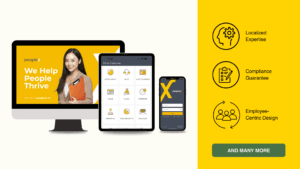Ramadan, the ninth month of the Islamic lunar calendar, is a time of profound spiritual significance for Muslims worldwide. This sacred month is marked by fasting from dawn until sunset, as individuals abstain from food, drink, and other physical needs, focusing instead on prayer, reflection, and acts of charity.
However, fasting during Ramadan, particularly when it coincides with high summer temperatures, presents unique challenges, notably maintaining adequate hydration levels. This challenge is particularly pertinent in regions like Malaysia, where hot weather conditions prevail during this holy month. The intense heat exacerbates the risk of dehydration, requiring careful attention to hydration strategies to safeguard health and well-being.
Ramadan holds immense cultural and religious significance, with millions of Muslims worldwide observing fasting rituals as a central tenet of their faith. Yet, as the lunar calendar shifts each year, Ramadan occasionally aligns with periods of intense heat, amplifying the risk of dehydration and its associated health implications.
In light of these considerations, it becomes imperative for individuals observing Ramadan, especially in hot climates like Malaysia, to prioritize hydration. By understanding the importance of hydration and implementing practical measures, individuals can navigate the challenges of fasting while safeguarding their health and spiritual practice.
In this article, we will explore essential tips and recommendations for staying hydrated during Ramadan, particularly in hot climates like Malaysia. From optimal hydration schedules to dietary choices and lifestyle adjustments, these strategies offer practical insights for a healthy and fulfilling fasting experience despite the challenges of hot weather.
6 Tips to Overcome Hydration Challenges During Ramadan
- Optimal Hydration Schedule: During Ramadan, it’s crucial to prioritize hydration between Iftar (breaking the fast at sunset) and Suhour (pre-dawn meal). Aim to drink between eight and 12 cups of water during this period, focusing on lukewarm water for quicker absorption. Additionally, including soups in daily meals can provide essential fluids.

- Hydrating Foods: Incorporate hydrating foods into meals, such as watermelon, tomatoes, cucumber, and grapes, which have high water content and help reduce thirst. These fruits and vegetables are particularly beneficial during hot weather conditions, aiding in hydration and overall well-being.

- Moderation with Spices and Salt: Be mindful of excessive spice and salt consumption, as they can increase the body’s need for water and exacerbate thirst. Opt for milder seasoning options and reduce salt usage to maintain optimal hydration levels, especially in hot climates where fluid loss is more pronounced.
- Limit Sweets Consumption: While sweets are enjoyed during Ramadan, it’s essential to consume them in moderation. Sugary foods can increase thirst levels, so opt for fruits as a healthier alternative that provides natural sugars and contributes to hydration.
- Avoid Caffeine and Nicotine: Caffeine and nicotine act as diuretics, increasing fluid loss and thirst. During Ramadan, avoid caffeinated drinks and smoking to prevent dehydration, particularly in hot weather conditions where the risk is heightened.
- Time Outdoor Activities Wisely: Limit outdoor activities and sun exposure during the daytime, especially in hot climates like Malaysia. Schedule outdoor tasks or exercise sessions after Iftar when you can replenish lost fluids and energy through food and drink, minimizing the risk of dehydration.

Maintaining hydration during Ramadan is crucial for overall health and well-being, particularly in hot climates like Malaysia, where the risk of dehydration is heightened. By prioritizing hydration through mindful dietary choices, optimal fluid intake, and lifestyle adjustments, individuals can navigate the challenges of fasting while safeguarding their health and spiritual practice. Through proactive measures and a holistic approach to hydration, Muslims can experience a fulfilling and healthy Ramadan despite the demands of hot weather conditions.
PeopleX HR Tech offers invaluable tools to support individuals during this holy month. From managing work schedules to applying for festive leave in advance, PeopleX ensures comfort and convenience, allowing individuals to thrive despite the challenges of fasting and hot weather conditions. Recognizing the importance of celebrating Eid al-Fitr, the festive culmination of Ramadan, PeopleX allows employees to apply for leave in advance. Through the app’s intuitive interface, individuals can submit leave requests with ease, providing ample time for HR departments to process requests and ensure adequate staffing levels during the holiday period. This proactive approach eliminates last-minute stress and allows individuals to enjoy quality time with family and loved ones during this joyous occasion.





